|
|
|||||
Rapidly rising interest rates set off the Latin American debt crisis in the 1980s, causing economic and political aftershocks still felt today. Will rising interest rates triggered by high inflation, plus a strong US dollar, now do the same in Africa? We take a closer look. |
|||||
|
|
|||||
Top News:Inflating interest: Average inflation is forecast to hit 9.5% in emerging and developing countries this year and 6.6% in advanced economies. Headline inflation in Africa has tripled from 3.5% in January 2020 to 10.6% in June 2022. Central banks are raising interest rates in an effort to tame inflation. Lower-income countries will ultimately pay the highest price: high inflation and interest rates can result in currency devaluation and capital flight, and make it both more expensive for countries to borrow money and more costly to service existing debts. It’s a lose-lose. Perfect storm: The pandemic, supply chain shortages, climate change, and Russia’s war in Ukraine – i.e., a perfect storm of crises – have contributed to higher global demand for the US dollar, which has strengthened it compared to other currencies. A stronger US dollar has a negative impact on global economic growth, and the impact is greatest in “emerging and developing economies,” according to a new Brookings Institution report. A stronger US dollar also makes imports more expensive – namely, food and fuel – ratcheting up the pressure on poorer countries’ economies. The World Bank is warning of a global recession in 2023 that would do “lasting harm” in emerging markets and developing economies, and World Bank President David Malpass is warning there may be insufficient global capital to meet those countries’ needs. Dollar contagion: The US Federal Reserve’s steep interest rate hikes in recent months to quell inflation will greatly impact other countries, particularly those with heavy debt burdens. The US dollar is the world’s reserve currency, and about 40% of global transactions are conducted in US dollars. Over 60% of low-income countries are already bankrupt or at high risk of debt distress, including 22 countries in Africa. Higher US interest rates are helping to strengthen the dollar, which makes payments on loans owed in US dollars more costly. In 2022 alone, debt servicing will cost Africa $64 billion. Analysts are warning of a “historic cascade of defaults.”
 Case in point: Ghana and Kenya illustrate the challenges many countries will face as higher interest rates meet high debt burdens. Ghana is facing a sovereign debt crisis, its worst since 2000, when the IMF and World Bank forgave $4 billion of debt. This time, however, a sizable portion of Ghana’s debt is privately owned by stakeholders that are uninterested in renegotiating, and an IMF bailout would come with attached strings that may not be politically palatable. To make matters worse, over 80% of Ghana’s external public debt is held in US dollars. In Kenya, public debt is expected to go above 70% of GDP this year, with 75% of it held in US dollars. The government’s use of subsidies to shield the population from the worst impacts of recent crises have left it with even greater debt servicing obligations. Belt tightening: Food price inflation is being keenly felt in Africa, where food can make up over 50% of household spending. Russian blocking of Ukrainian grain has significantly contributed to rising food costs, with fuel prices also impacted. Over the last two years, the cost of staple foods like wheat, palm oil, and rice rose by nearly 24%. In Ghana, the price of cassava (a root vegetable that makes up an estimated 30% of Ghanaian's daily caloric intake) rose by 78% from 2020 to 2021. Increased consumption of staple foods, higher production costs, local currency depreciation, and transport constraints are helping drive the price increases. Local prices of staples in Africa increase an average of 0.7% for every 1% increase in the consumption share, according to the IMF. Shrinking pot: Meanwhile, the impact of the economic, political, and health crises in rich countries has resulted in reduced development budgets. In other words: at a time of multiple crises and greater need, there’s less help. Russia’s war in Ukraine has been a key driver, drastically increasing the need for refugee assistance inside Europe. Some European countries (most notably the UK) are drawing from their development budgets to support Ukrainian refugees. ONE’s estimates show that in-donor refugee costs for Ukraine could exceed $45 billion, which is more than a quarter of total global aid spent in 2021. Unless rich countries increase their ODA budgets to support the development needs of lower-income countries and support in-country refugees, the results could be disastrous. Exhibit A: Somalia is on the verge of famine, yet there’s a nearly 30% humanitarian funding shortfall.  Solution mindset: There are several critical steps that wealthier countries
From the ONE Team:
The Numbers:
 |
|||||
|
|
|||||
QUOTE OF THE WEEK
|
|||||
|
|
|||||
What you should read, watch & listen to:
|
|||||
|
|
|||||
A look ahead:5-7 October, the C20 Summit takes place in Bali, Indonesia. 10-16 October, the IMF / World Bank Annual Meetings take place in Washington DC. 12-13 October: G20 Finance Ministers meet in Washington DC. |
|||||
|
|
|||||
The ONE Campaign’s Africa COVID-19 Tracker brings together the key data points on how COVID-19 is impacting Africa. Check it out HERE. |
|||||
|
|
|||||
|
|
|||||
Did you like today's email?Loved it Mehhh Hated it |
|||||
|
|
|||||
Did you like today's email?Loved it Mehhh Hated it |
|||||
|
|
|||||
Wie hat dir dieser Newsletter gefallen?Richtig gut! Ging so… Überhaupt nicht. |
|||||
|
|
|||||
|
|||||
|
|||||
|
|||||
|
This email was sent by ONE.ORG to test@example.com. You can unsubscribe at any time. ONE Campaign |
